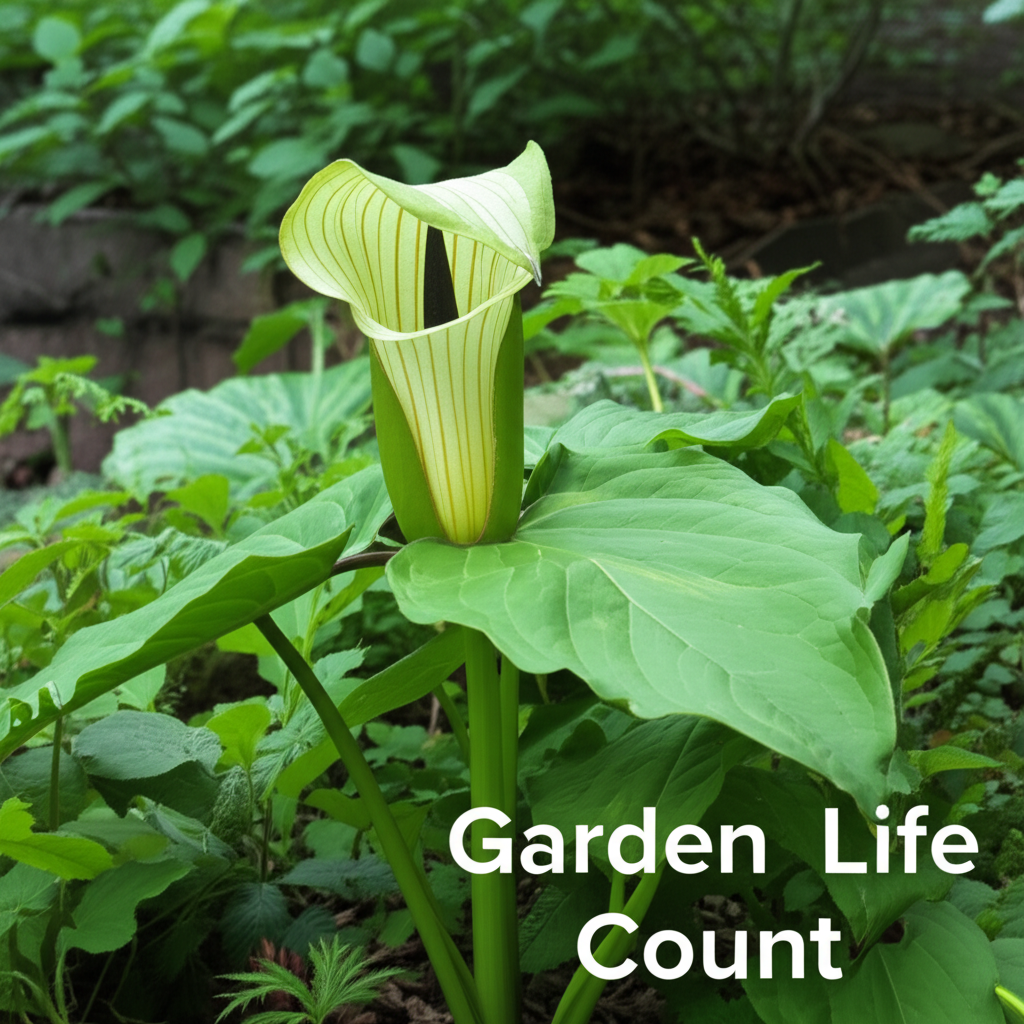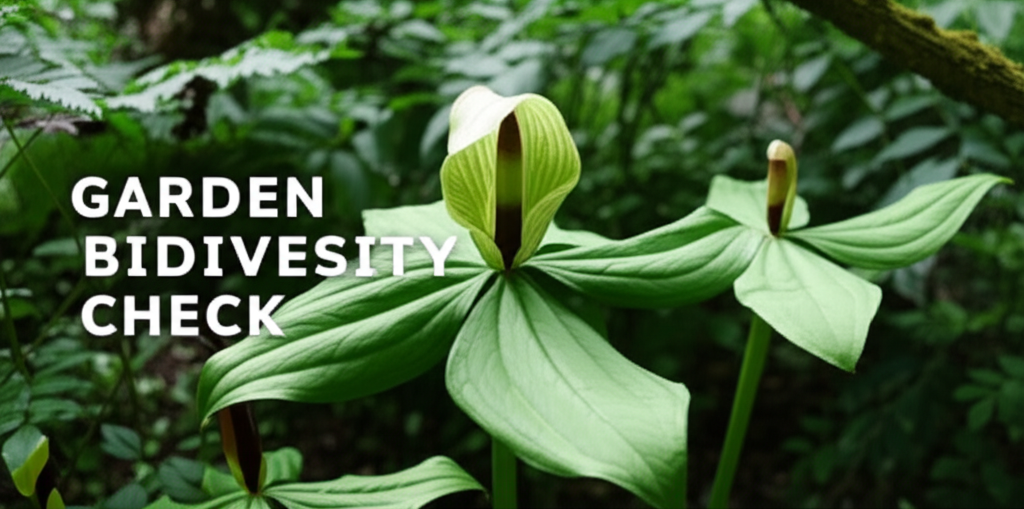The Intriguing Jack-in-the-Pulpit: More Than Just a Pretty Face
The Jack-in-the-Pulpit, scientifically known as Arisaema triphyllum, is a captivating woodland perennial that graces the understory of Eastern North American forests. Its distinctive spathe, resembling a preacher in a pulpit, and the accompanying spadix, the “Jack,” make it instantly recognizable and a favorite among native plant enthusiasts. Beyond its unique aesthetic, this plant plays a vital role in its ecosystem, making it an ideal subject for biodiversity monitoring. Understanding its presence, health, and interactions with other species provides valuable insights into the overall well-being of its woodland habitat.
Why Monitor Jack-in-the-Pulpit?
Monitoring Jack-in-the-Pulpit populations is not merely an academic exercise. It serves several crucial purposes for conservation and ecological understanding:
- Indicator Species: Arisaema triphyllum thrives in specific conditions – moist, shady, nutrient-rich soils. Changes in its population density or health can signal shifts in these environmental factors, potentially indicating issues like soil degradation, increased competition from invasive species, or altered moisture regimes due to climate change.
- Habitat Health Assessment: The presence of a robust Jack-in-the-Pulpit population often correlates with a healthy, undisturbed woodland ecosystem. They are typically found alongside other native wildflowers, fungi, and a diverse array of insects and small animals.
- Pollinator Interactions: The unique structure of the Jack-in-the-Pulpit flower attracts specific pollinators, primarily flies and gnats. Studying these interactions helps us understand the intricate web of relationships within the forest and the reliance of certain insects on this particular plant.
- Seed Dispersal Networks: The bright red berries produced by the female plants are a food source for birds and small mammals. Observing which animals consume and disperse the seeds can reveal important information about local seed dispersal networks.
- Response to Environmental Change: As a perennial plant with a specific life cycle, Arisaema triphyllum can be a sensitive indicator of long-term environmental changes, such as subtle shifts in temperature or rainfall patterns.
Key Facts about Jack-in-the-Pulpit

To effectively monitor this fascinating plant, it’s essential to understand its fundamental biological characteristics.
| Characteristic | Description |
|---|---|
| Scientific Name | Arisaema triphyllum |
| Common Names | Jack-in-the-Pulpit, Indian Turnip, Bog Onion, Wake Robin |
| Habitat | Moist, shady woodlands, stream banks, low-lying areas |
| Soil Preference | Rich, humusy, well-drained but consistently moist soil |
| Bloom Time | Late spring to early summer (May-June in much of its range) |
| Flower Structure | Spadix (the “Jack”) enclosed by a spathe (the “pulpit”) |
| Reproduction | Monoecious (can produce both male and female flowers on the same plant, with sex often changing over time) or dioecious. Primarily reproduces via corms and seed dispersal. |
| Fruiting | Produces a cluster of bright red berries in late summer/fall. |
| Toxicity | Contains calcium oxalate crystals, making all parts of the plant toxic if eaten raw. Proper preparation (drying, cooking) can neutralize this. |
| Typical Height | 1-3 feet (0.3-0.9 meters) |
Life Cycle and Sex Determination
The life cycle of the Jack-in-the-Pulpit is complex and intriguing, particularly its ability to change sex.
- Corm Development: The plant grows from a corm, a swollen underground stem. Over time, the corm can produce smaller cormels.
- Seedling Stage: Young plants typically produce only one leaf and function as male plants.
- Sex Change: As the corm accumulates sufficient energy reserves from photosynthesis, it can transition to producing female flowers. Larger, more robust plants are more likely to be female. This flexibility allows the plant to maximize its reproductive success based on resource availability.
- Dormancy: The above-ground parts die back in the fall, and the plant enters dormancy through the winter, relying on its corm.
Methods for Jack-in-the-Pulpit Biodiversity Monitoring
Effective monitoring requires a systematic approach that captures key ecological data.
Establishing Monitoring Sites
Choosing appropriate monitoring sites is the first critical step.
- Representative Habitats: Select sites that represent the typical woodland habitat for Arisaema triphyllum in your region. This might include mature forests, riparian zones, or historically wooded areas.
- Transects and Quadrats: Establish permanent transects or quadrats (defined areas) within these sites. This allows for repeatable measurements over time, reducing variability.
- Site Characteristics: Record important site characteristics for each monitoring location, including:
- Dominant tree species
- Canopy cover percentage
- Soil type and moisture level
- Aspect (north-facing, south-facing slope)
- Presence of understory vegetation (including invasive species)
Data Collection Protocols
Standardized data collection ensures accuracy and comparability.
- Population Surveys:
- Within established quadrats or along transects, count the number of Jack-in-the-Pulpit plants.
- Record the number of plants with leaves, the number of flowering/fruiting plants, and the number of immature plants.
- Note the number of leaves per plant (typically 2 or 3).
- Health Assessment:
- Assess the general health of each plant. Look for signs of stress such as wilting, leaf discoloration, or damage from pests and diseases.
- Record any evidence of herbivory (chewing marks on leaves).
- Associated Species:
- Within the same monitoring areas, identify and count other significant plant species, particularly native wildflowers and any invasive plant species.
- Record the presence of key pollinator groups (e.g., flies, gnats) and their activity around the Jack-in-the-Pulpit flowers.
- Note the presence of birds or mammals observed interacting with the berries.
- Environmental Measurements:
- Periodically measure soil moisture and temperature.
- Record ambient air temperature and humidity during site visits.
- Note recent precipitation events.
Frequency of Monitoring
Consistency is key to detecting trends.
- Annual Surveys: Conduct population and health surveys at least once annually, ideally during the peak growing season (late spring/early summer) when plants are most visible.
- Seasonal Observations: Make additional observations throughout the growing season to track flowering, fruiting, and the presence of associated fauna.
- Long-Term Commitment: Biodiversity monitoring is most effective when conducted over multiple years, even decades, to understand population dynamics and responses to environmental changes.
Analyzing and Interpreting Data
Raw data is only useful when analyzed to reveal ecological patterns.
Key Metrics for Analysis
Several metrics can be calculated from the collected data.
- Population Density: Number of plants per unit area (e.g., per square meter).
- Reproductive Success: Percentage of mature plants that produce flowers and/or fruit.
- Species Richness: Number of different plant species found within the monitoring plots.
- Community Composition: The relative abundance of different species, including the proportion of native vs. invasive plants.
- Health Indices: A scoring system to quantify the overall health of the Jack-in-the-Pulpit population.
Interpreting Trends
Look for changes over time and correlations with environmental factors.
- Declining Populations: A decrease in Jack-in-the-Pulpit numbers could indicate habitat degradation, increased competition, or stress from environmental changes.
- Reduced Reproductive Output: A lower percentage of flowering or fruiting plants may suggest insufficient resources, poor pollination success, or adverse weather conditions.
- Changes in Associated Species: An increase in invasive plants or a decrease in native wildflowers can signal a shift in ecosystem health.
- Correlation with Environmental Factors: Analyze whether population changes are correlated with changes in soil moisture, temperature, or canopy cover.
Pros, Cons, and Considerations of Jack-in-the-Pulpit Monitoring
Every monitoring approach has its advantages and challenges.
| Aspect | Pros | Cons | Considerations |
|---|---|---|---|
| Ease of Identification | Distinctive appearance makes it easy for beginners to identify. | Can be confused with other Arisaema species if identification is not precise. | Train observers on accurate identification, especially distinguishing different Arisaema species. |
| Indicator Potential | Sensitive to habitat changes, providing early warnings. | Its specific habitat needs mean it may not be present in all woodland types, limiting its use as a universal indicator. | Focus monitoring in areas known to support healthy Jack-in-the-Pulpit populations. |
| Resource Requirements | Relatively low resource requirements for initial setup (notebook, pen, ID guide). | Can require specialized equipment for more advanced monitoring (soil probes, temperature loggers). | Start with basic observation and gradually incorporate more sophisticated tools as needed. |
| Seasonality | Visible and identifiable for a significant portion of the growing season. | Above-ground parts die back in fall, making winter monitoring impossible. | Plan data collection to coincide with the plant’s active growth period. |
| Data Management | Relatively straightforward data collection on plant counts and health. | Analyzing complex relationships with associated species and environmental factors requires statistical knowledge. | Use data management software or spreadsheets for efficient organization and analysis. |
| Community Involvement | Engaging for citizen scientists due to its unique appearance. | Requires consistent training and quality control for citizen science projects. | Develop clear protocols and provide ongoing support and feedback to volunteers. |
Citizen Science and Public Engagement
Engaging the public can significantly amplify monitoring efforts.
- Educational Workshops: Conduct workshops to teach local residents and volunteers about Jack-in-the-Pulpit identification, its ecological role, and how to participate in monitoring.
- Online Platforms: Utilize citizen science platforms like iNaturalist or dedicated project websites to collect and share observational data.
- Community Science Projects: Organize local “bioblitz” events focused on woodland biodiversity, with Jack-in-the-Pulpit as a key species.
- Data Visualization: Share findings and trends with the community through public presentations, newsletters, or online dashboards to foster engagement and demonstrate the value of their contributions.
Conservation Implications and Actions
The insights gained from monitoring can inform targeted conservation efforts.
Habitat Protection and Restoration
Protecting and restoring suitable habitats is paramount.
- Invasive Species Management: Actively control invasive plants that outcompete Jack-in-the-Pulpit for light, water, and nutrients.
- Preserving Hydrology: Ensure that water flow and soil moisture levels remain consistent, as disruptions can harm sensitive woodland plants.
- Minimizing Soil Disturbance: Avoid heavy machinery or excessive foot traffic that can compact soil and damage root systems.
- Promoting Native Plant Communities: Encourage the growth of native understory plants that support a healthy ecosystem and provide resources for Jack-in-the-Pulpit and its associated fauna.
Climate Change Adaptation
Understanding how Jack-in-the-Pulpit responds to climate change can guide adaptive strategies.
- Monitoring Shifts: Track whether populations are shifting their ranges or exhibiting changes in phenology (timing of flowering, fruiting) in response to warming temperatures or altered precipitation patterns.
- Assisted Migration (with caution): In extreme cases, if a population is critically threatened in its native range due to climate change, consideration might be given to carefully planned assisted migration to more suitable future habitats, but this is a complex conservation tool with significant risks.
Conclusion: A Call to Observe and Protect
The Jack-in-the-Pulpit is more than just an attractive woodland resident; it is a sensitive barometer of the health of its ecosystem. By systematically monitoring its populations, health, and interactions, we gain invaluable insights into the intricate workings of our forests. These observations empower us to make informed decisions about habitat management and conservation, ensuring that this fascinating plant, and the diverse array of life it supports, continues to thrive for generations to come. Whether you are a professional ecologist, a dedicated land manager, or a curious citizen scientist, your observations of the Jack-in-the-Pulpit contribute to a larger, more complete picture of our natural world.


